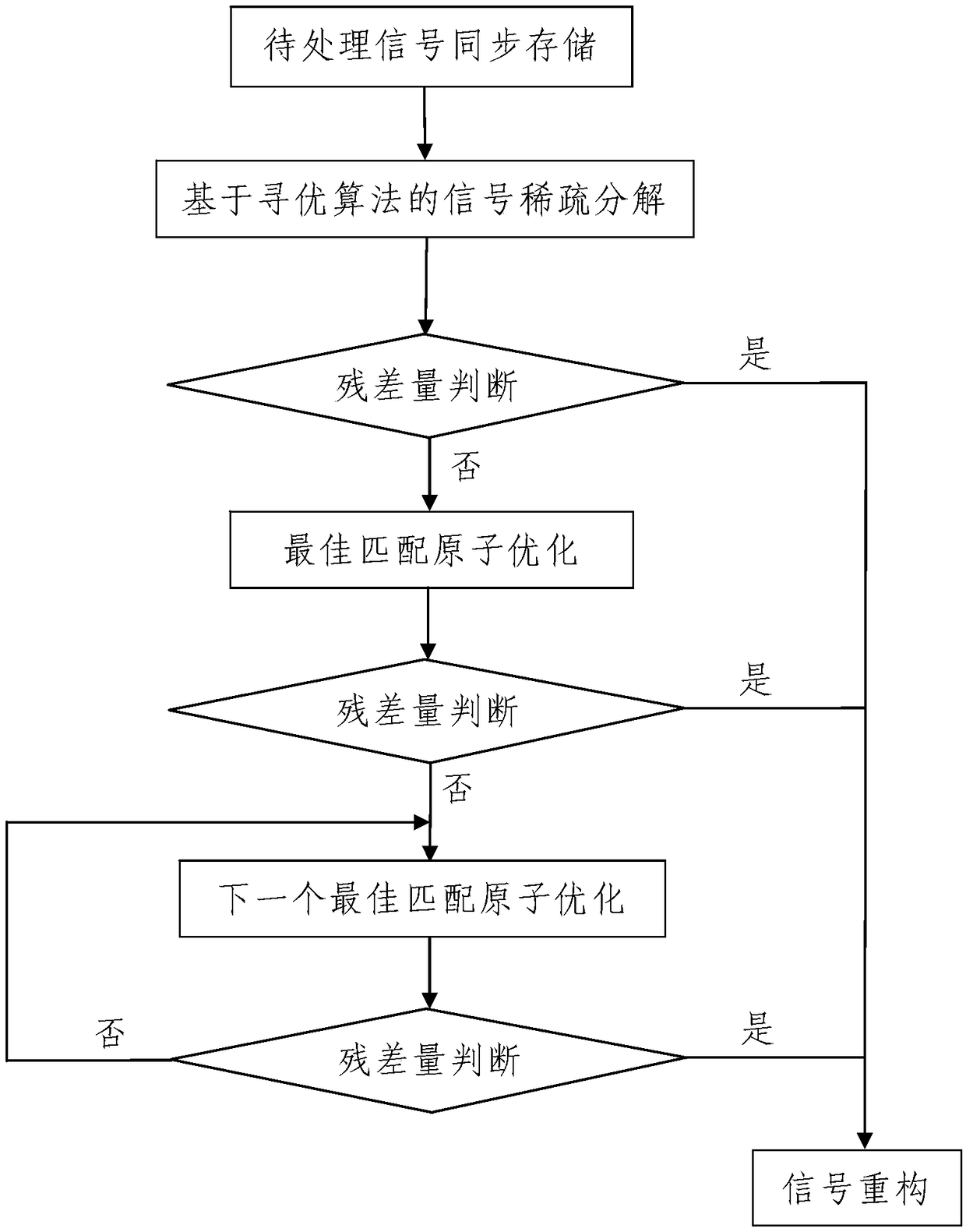Signal extraction method
A signal extraction and signal processing technology, applied in the analysis of solids using sonic/ultrasonic/infrasonic waves, material analysis using sonic/ultrasonic/infrasonic waves, and measuring devices, etc. huge problem
- Summary
- Abstract
- Description
- Claims
- Application Information
AI Technical Summary
Problems solved by technology
Method used
Image
Examples
Embodiment Construction
[0087] like figure 1 A signal extraction method shown comprises the following steps:
[0088] Step 1, synchronous storage of signals to be processed: adopting data processing equipment 2 to carry out synchronous storage of signal f(t) to be processed; said signal f(t) to be processed (i.e. original signal) is a signal collected by signal sampling system 1;
[0089] Among them, f(t)=[f(t 1 ), f(t 2 ),...,f(t N )] T , t represents the time parameter, t i is the i-th sampling moment of the signal sampling system 1, f(t i ) is the signal value of the ith sampling moment in the signal to be processed f (t), i is a positive integer and i=1, 2, 3, ..., N, and N is the signal length of the signal f (t) to be processed;
[0090] Step 2, signal processing to be processed: adopting data processing equipment 2 to process the signal f(t) to be processed described in step 1, the process is as follows:
[0091] Step 201, signal sparse decomposition based on an optimization algorithm: ...
PUM
 Login to View More
Login to View More Abstract
Description
Claims
Application Information
 Login to View More
Login to View More - R&D
- Intellectual Property
- Life Sciences
- Materials
- Tech Scout
- Unparalleled Data Quality
- Higher Quality Content
- 60% Fewer Hallucinations
Browse by: Latest US Patents, China's latest patents, Technical Efficacy Thesaurus, Application Domain, Technology Topic, Popular Technical Reports.
© 2025 PatSnap. All rights reserved.Legal|Privacy policy|Modern Slavery Act Transparency Statement|Sitemap|About US| Contact US: help@patsnap.com


